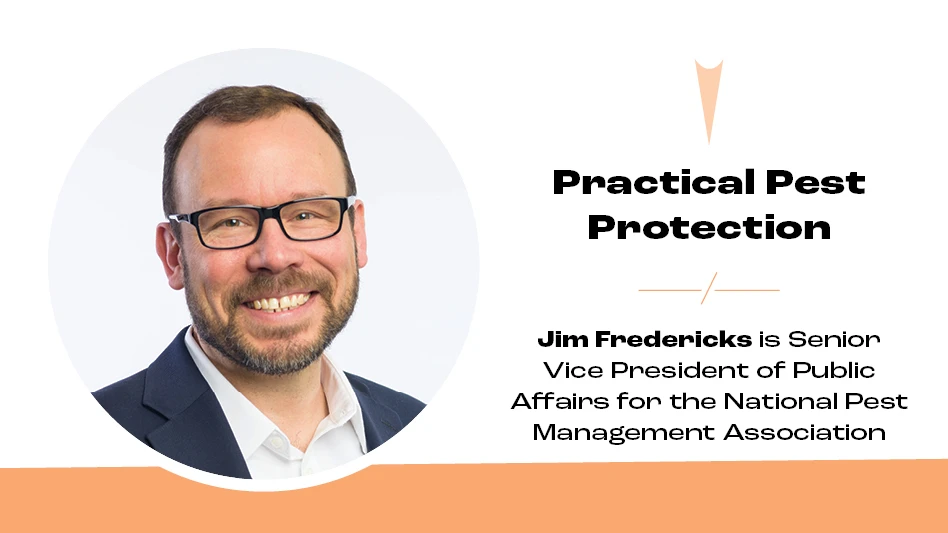
When considering what makes commercial operations susceptible to pest infestations, food processing facilities are unique, as they offer the No. 1 thing pests need for their populations to survive and thrive — food. Because of this, it’s extremely important for food processing facility managers and staff to be well educated on the pest threats they face, as well as the best ways to prevent and address infestations. To do this, facility managers should prioritize partnering with a reliable pest control company to ensure facilities remain pest-free and compliant with food safety requirements.
FOOD PROCESSING FACILITY PEST INVADERS. Food processing facilities present the perfect conditions for various pests, including rodents, flies, cockroaches and stored product pests like Indian meal moths and drugstore beetles to thrive, thanks to an abundance of food, shelter and moisture. In the spring and summer months, food processing facilities constructed of wood may also be susceptible to termites.
These pests can cause serious issues for food processors, as they are capable of contaminating food with their droppings and are known to spread many diseases to humans, including E. coli and Salmonella. Rodents are also capable of chewing through wiring, which can result in electrical fires and damage to essential equipment. While pantry pests do not transmit disease, they can still infest ingredients, resulting in the contamination of food products made in these facilities. The main threat posed by termites is their ability to cause extensive property damage. They cause an estimated $6.8 billion in property damage in the United States each year, which can be extremely costly to a business.
PARTNERING WITH A QUALIFIED PEST CONTROL COMPANY. In food processing facilities, pest control is not a DIY task, which makes partnering with a qualified pest control company vital to success.
In food processing facilities, pest control is not a DIY task, which makes partnering with a qualified pest control company vital to success.
When choosing your pest control partner, it is best to meet with several companies to determine which will be the best fit for your facility’s location and needs. During the evaluation process, be sure to ask detailed questions about their pest control practices and other clients they serve in the industry. It can be helpful to inquire with industry peers and partners on their pest control experiences. Also, look for companies that are members of national, state or local associations, as these memberships speak to a commitment to protecting public health and property from the threats posed by pests, as well as a desire to receive ongoing education about new technologies and treatment techniques.
Once you have chosen the pest control partner best suited for your business, there are several ways to guarantee you are getting the most out of your relationship. Scheduling regular inspections can help catch potential pest problems in your facility before an infestation takes hold. A pest control partner is expertly trained to treat any potential problems discovered to ensure the safety of your employees and the products made inside your facility. On top of regularly scheduled inspections, it is helpful to maintain consistent and open communication with your pest control partner about pest issues being experienced to help tailor inspections and treatments to the facility’s specific needs.
A key part of your relationship with your pest control partner will be developing an Integrated Pest Management (IPM) plan specially designed for your facility and its unique needs to ensure compliance with FDA regulations for pest control. IPM is a pest control method that focuses on three basic techniques: inspection, prevention and treatment by a pest control professional.
PEST PREVENTION. While it is imperative to have an ongoing partnership with a licensed pest control company, managers also play a vital role in keeping their facilities pest-free in between inspection and treatments. To help keep pests out, NPMA recommends facility managers implement these IPM best practices:
- Ensure employee kitchens and break rooms are clean by wiping down counter tops and sweeping floors to remove crumbs and residue from spills.
- Vacuum and clean all areas regularly, including offices, hallways, lobbies and public bathrooms.
- Routinely check under sinks and machinery for areas of moisture and repair any leaky pipes or clogged drains.
- Store all food products in sealed containers and organize empty boxes to prevent harborage areas.
- Keep trash in sealed containers inside the building and remove from the facility regularly. Ensure dumpsters are far away from any building entry points.
- Inspect the exterior of the building to ensure there are no entry points, paying close attention to areas where pipes and utilities enter the building, and seal any gaps or cracks in the foundation.
- Install door sweeps on exterior doors to seal the gap between the floor and the door where pests can enter.
- Remove debris from gutters and direct water away from the building through properly functioning downspouts, gutters and splash blocks.
- Install a gravel perimeter around the building to help discourage rodent burrows and vegetation growth that could harbor pests.
- Ensure the grounds surrounding the facility are properly maintained, as overgrown vegetation can attract pests to the property.

Explore the May/June 2024 Issue
Check out more from this issue and find your next story to read.
Latest from Quality Assurance & Food Safety
- Chef Robotics Introduces Pat-Down Capability for Meal Presentation and Sealing
- USDA Launches Regenerative Pilot Program
- Indoor Ag-Con Adds Food Safety Track to Conference Lineup
- IDFA Recognizes Federal Officials for Support of U.S. Dairy Industry
- Tetra Pak Acquires Bioreactors.net
- Fresh Del Monte Receives Rabobank Leadership Award
- São Paulo Earns Guinness World Record for Largest Municipal Food Security Program
- KPM Analytics Releases Ready-to-Use NIR Calibration Packages





